This Lawn Care Program for warm season grass will help you get that next level lawn. This program focuses on the importance of soil temperatures and uses the best fertilizers and strategies for preventing weeds.
If you’re new to lawn care, or have failed with the Step programs sold in the big box stores, than you’ve come to the right place. I’m going to share with you a solid warm season lawn care plan, but more importantly I’m going to teach you why we are using these products, how you should apply them, and when to apply them. I’m also going to tell you where you can easily get these products so you’re not wasting time traveling from store to store. In fact a lot of these products you can get online with no additional shipping charge.
Before we get started I want to point out that this plan is for those with warm season grass. If you’re wondering what that is or you’re not sure if you have it then you have to check this out first: Warm Season vs Cool Season Grass. If you know that you have cool season grass then check out this plan Instead: Cool Season Lawn Plan
What’s Great About This Lawn Care Plan
* One of the main reasons this plan is so effective is it focuses on soil temperatures, not calendar dates to determine when it’s time to throw down product. Timing is so important when applying products, especially pre emergent herbicides. Soil temperatures are the driving force behind when your lawn starts to grow, when it stops growing, and when weeds germinate, and stop germinating. We need to look at the specific soil temperature thresholds that trigger activity in your lawn and we need to be ready to act right when average soil temps enter those ranges.
* This plan uses fertilizers that are slow (or slower) release than synthetic fertilizers. This reduces the likeliness of burning your lawn if you accidentally over apply. It’s also provides a steady feeding instead of just a quick growth spurt.
* This plan uses pre emergent herbicides to prevent crabgrass and other weeds at 3 different strategic times (soil temperatures). Most of the step programs in the stores only recommend one early spring pre emergent. We are going to do 3 applications when specific soil temps are reached and this will provide season long coverage.
* This plan uses a post emergent, liquid herbicide for weeds that are already existing. I’m a big fan of liquid post emergent herbicides and almost never use granular post emergents such as Weed & Feed. Granular post emergent herbicides rarely work and require very specific conditions to have any success. Liquid is definitely the way to go.
Important Soil Temperatures
As mentioned above this plan is centered around soil temperatures. There are two easy ways to get the average soil temperature of your lawn. One is by going to GreenCast Online and entering your zip code. Here you can look at current soil temps but I recommend you look for the 24hr average. You can also look at previous data from years past to see when different soil temperatures are usually hit in your specific area.
Secondly, you can purchase a soil thermometer. This thermometer will spike during the heat of the day and decrease during the night and morning hours. I always look at the thermometer as just another way to get data. Ultimately I consider soil temps from both my thermometer and the information I get from Greencast Online to get a well rounded look at what soil temps are on my property. Let’s take a look at some important soil temps as it relates to warm season grass:
1. 55 Degrees- This is the beginning of your lawn care program in the spring and the end of your lawn care program in the fall. In the spring it is when crabgrass and annual broadleaf weeds will start to germinate. This is when you want to have your first round of pre emergent already in the ground. At this point the lawn is not quite ready for fertilizer since it is still a little sluggish coming out of winter so for now just apply a pre emergent. In the fall, when temps come back down to the 55 degree mark this will signal the end of your lawn care season and your warm season grass will start to check out (depending on your location).
2. 65 Degrees- In the spring when soil temps hit 65 degrees your warm season lawn is starting to grow and you will begin mowing. At this point you want to apply your second round of pre emergent to block weeds as they continue to germinate. It will also be time to put down your first fertilizer application. In the fall, as soil temps head back down to 65 degrees you should be done with any fertilizers containing high levels of nitrogen. After this your warm season grass will start to prepare for winter so don’t force too much blade growth with nitrogen or it could stress the lawn out more.
3. 70 Degrees- In the late spring when soil temps hit 70 degrees your warm season grass is growing strong. It should be mowed often (at least twice a week) and you should feed it plenty of nitrogen to keep it full and strong. It’s in a growth spurt from now all through summer as temps continue to climb so keep it fed with plenty of nitrogen. In the fall when soil temps head down past the 70 degree mark apply your third and final round of pre emergent since fall germinating weeds such as poa-annua, chickweed, and hairy bittercress can germinate once soil temps cool in the fall. This is also when your last round of fertilizer should be applied. This will be a low nitrogen, high potassium fertilizer to prepare your lawn for winter.
Recommended Pre Emergent Herbicides
For this program I’m going to recommend 2 different pre emergents but you can choose to use either one for all 3 of your applications or you can choose to do 2 applications with one product and for the final application switch things up by using the other product. Switching things up is my preferred method which I’ll explain more when talking about these 2 products:
1. Prodiamine 0-0-7
Prodiamine 0-0-7 is a granular pre emergent that should be applied at 3 lbs. per 1000 s/f. After being watered in it helps create a barrier near the surface of the soil that blocks crabgrass and annual weeds from emerging for up to 3 months. This product also contains 7 percent potassium which is beneficial early and late in the lawn care season when lawns are stressed. Apply this product when soil temps hit a 24hr average of 50 degrees in the spring, and again a couple of weeks later when soil temps cross 65 degrees. These 2 applications are on the light side but they are done within weeks of each other. This is going to give you a more even, longer lasting coverage in the spring and summer. You can also use this product at the end of the summer as soil temps start to cool and head back down to the 70 degree range or you can switch to another pre emergent (Dithiopyr) which I recommend below. The reason I like to change things up is because with Prodiamine you’re only supposed to apply a total of 9 pounds per 1000 s/f for the season. At 3 lbs per 1000 s/f for 3 applications we are at our max. I like to have a slightly higher dosage on this last application to get long coverage over the long winter so moving to the Dithiopyr I know I can apply at a higher rate, (closer to 4-6 lbs per 1000 s/f)
2. Dithiopyr 0-0-7
Dithiopyr 0-0-7 is another great, granular pre emergent. In terms of effectiveness it is very similar to the Prodiamine 0-0-7 above. It too has 7 percent potassium which is beneficial early and late in the season. Unlike the Prodiamine, Dithiopyr actually has some post emergent benefits to it meaning it can kill weeds for a brief period after they’ve emerged, in addition to it being an effective pre emergent herbicide. This is a great option if you think you got a late start to the season and missed the important 50 degree soil temperature where pre emergents should be thrown down. Application rates and timing is similar to the Prodiamine above just note I prefer to use this as the third and final pre emergent application of the season since I can increase application rates heading into winter when there is likely a longer period of coverage that is needed.
Recommended Post Emergent Herbicide
No pre emergent plan is perfect. You’re going to have weeds that pop up and you’ll need a post emergent herbicide to take care of it. Also don’t forget, pre emergent herbicides won’t help prevent perennial lawn weeds that are already existing in your lawn. In your lawn care program you will need a good all around liquid post emergent herbicide that is selective, meaning it will kill weeds without killing your lawn. Now I’ll admit, I struggle to recommend one specific post emergent for warm season lawns since there’s not really one generic product that can be used on all lawns that will kill all weeds. At the end of the day you have to read labels especially when shopping for post emergent herbicides. You also have to know your grass type and what weeds you are trying to control in your lawn. Having said that, the best all around post emergent that will take care of a lot of problems across most warm season lawns is Image Southern Lawn Weed Killer. The label says safe for St. Augustine and Centipede grass but it is also safe on Zoysia, Bermuda, and Bahia. The best way to use this product is to mix the concentrate in a tank sprayer and be ready to spot treat weeds weekly or as you see them. Follow the label for mixing rates and application instructions.
The only problem with the Image Southern Lawn Weed Killer is it’s not great with killing crabgrass. If crabgrass is a problem in your lawn then I recommend using Celsius WG. You might have some sticker shock when you look at the price of this so I want to point out that this product is a concentrate that gets mixed with water in a tank sprayer. You will get a lot of mileage out of this product and it will likely last several seasons depending on how much crabgrass you have. This product targets a lot of other weeds that the Image Southern Lawn Weed Killer doesn’t, so having both products on hand will cover you for most weed problems in you warm season lawn.
If you have crabgrass and don’t want to splurge for the Celsius WG then feel free to shop locally for a liquid, lawn safe crabgrass killer. Just be sure to read labels so you know that it’s safe for your lawn.
Recommended Fertilizers
The best part about these fertilizers is 2 of them (Stress Blend 7-0-20, Flagship 24-0-6) are sold online by the same company and delivered right to your house. You should be able to find the Milorganite 6-4-0 locally at a big box store or be able to have it shipped to your nearest Home Depot or Lowes.
Stress Blend 7-0-20
Stress Blend 7-0-20 is the first and last fertilizer used in this program. It is a slow release fertilizer that is low in nitrogen and high in potassium which makes it a great choice for when your lawn is in stress, which it is in early spring and late fall.
Flagship 24-0-6
Flagship 24-0-6 contains both immediate and slow release nitrogen. It also contains 3% iron that will give you a dark green color. This is a very well balanced fertilizer that I like to use in the middle of the season, alternating back and forth with the Milorganite 6-4-0. By alternating between the two products I know I’m getting the correct proportions of NPK (nitrogen, phosphorus, and potassium.)
Milorganite 6-4-0
Milorganite 6-4-0 is a slow release fertilizer made from bio solids. It is almost completely organic. Milorganite is high in nitrogen and also contains iron which gives your lawn a deep green color. It’s a great product to apply while your lawn is actively growing and needing nitrogen. You’ll notice this product is different from other fertilizers you’re used to putting down since it requires a lot more product to get the full nitrogen dosage we are looking for, however the price per bag is a lot cheaper than most fertilizers that are richer in nitrogen. In this program Milorganite is going to be used in the middle of the summer when your lawn is feeding heavily and needs a good dose of nitrogen. It’s also a great choice for those of you in the very southern regions who have longer growing seasons and need to extend your lawn program. Instead of 6 rounds of applications you might need 7 or 8. If this is the case then just work in some extra applications of Milorganite in between applications of the Flagship 24-0-6. Ultimately, just keep an eye for that 70 degree soil temperature threshold at the end of the season where you’ll be applying the Stress Blend 7-0-20 to close out the season (along with your last round of pre emergent). Also, another overall strategy you can apply is to lessen your overall application rates for all products and shorten the amount of time in between applications. For example instead of waiting 5-6 weeks in between applications, throw down less amount but do it every 4 weeks. This way you can work in a couple of extra applications and this product is a great choice for that. This is called ”spoon feeding”.
Lawn Care Program for Warm Season Grass
Before using this lawn care program I can’t tell you enough how important it is to have a real understanding of fertilizer application rates. If you’re relying on spreader settings listed on the back of a bag of fertilizer then you need to read this post: How to Fertilize Your Lawn. Also, when the plan calls for an application of pre emergent and an application of fertilizer don’t mix the two together. Apply them separately but on the same day.
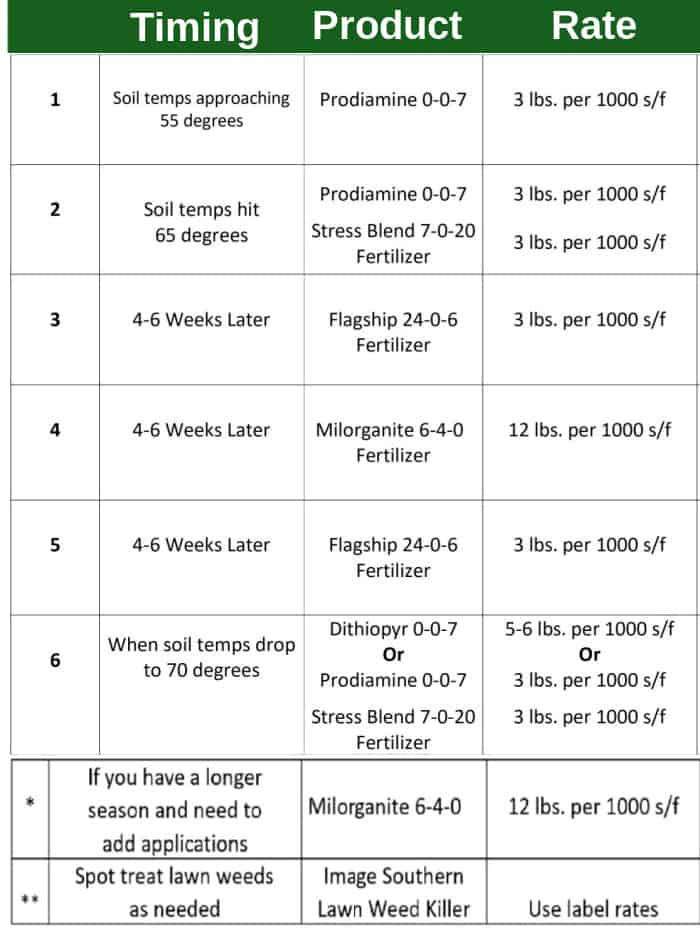
Limitations
It’s important to point out that this program makes no mention of lawn disease. Honestly, you might not have to worry about it but there may come a time where you need to work it into your overall plan. In the meantime I suggest you check out this post to be ready in case you need to act: Treating and Preventing Lawn Fungus
Soil Testing
I want to point out that the plan above is a great general plan, but you should definitely make adjustments based on a simple soil test. Check out the easiest way to get a soil test of your lawn and how to interpret the data: Soil Test for Lawn
Lastly, if you want an even easier plan then check out this lawn care program that uses only 4 products. This is as simple as it gets and is a great option for someone that is just starting out and is a little overwhelmed: Warm Season Lawn Care Program Using 4 Products
Check Out These Posts Next
Lawn Care Schedule for Warm Season Lawns
3 Product Lawn Care Program- Cool Season Lawns
How to Measure Square Footage of Lawn
Cool Season Vs. Warm Season Grass
Treating and Preventing Lawn Fungus
Follow Me
Join my free email list!


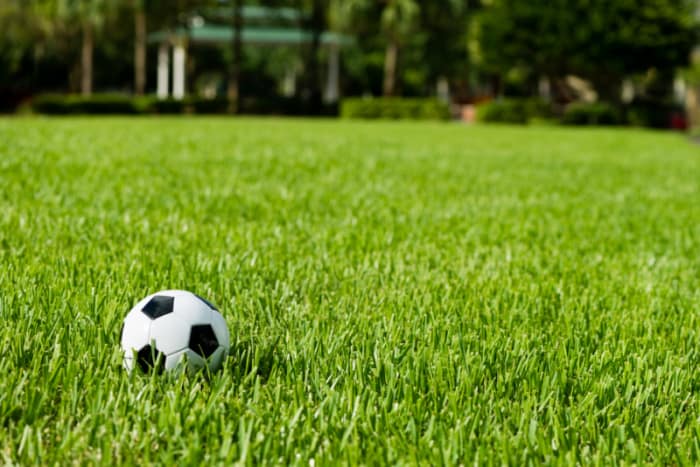
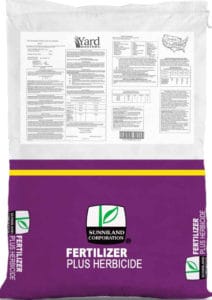
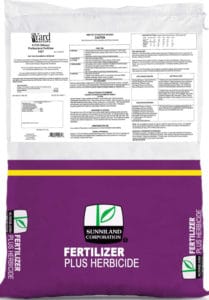
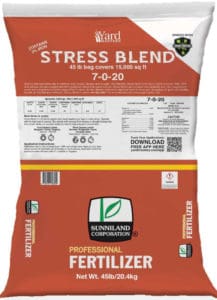

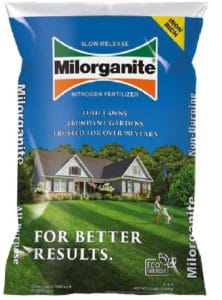
Hi Mark it’s John Sobon in Md. I just finished reading your directions for warm weather grasses. Great, thanks!! But in you said liquid herbicide was the way to go. But you only listed dry or granular. What would be the liquid ones that you would recommend??
Hi John! If you check it out again I said granular Pre Emergent herbicides are the way to go but for Post Emergent Herbicides I recommend liquid. That’s the Image Southern Lawn Weed Killer Product that I have recommended. Just re check the use of the word Pre and Post… I know it gets a little confusing. Let me know if you need more clarification, thanks!
Great work!
Thank you!
I love that you used temperature fluctuations to remind us when to take the next step in our lawn care process. I never imagined that there would be such science involved. Judging from your pictures, you seem to have everything down perfectly!!! I will follow these directions in the hope that my lawn can one day look like yours!!! Thanks Mark!
Thanks so much for the great comments Jason, happy to hear you’ve learned a couple of things. Good luck!
Mark, I just read this year’s Lawn Care Program for Warm Season Grasses. I notice some changes from last year’s Program. I applied Prodiamine 0-0-7 on 3/4/22. Last year I used Lesco 19-0-7 with Dimension so before reading the 2022 Program I bought the Lesco product preparing for the 65 degrees application. Since I will use the Lesco product for my second application how do you recommend I modify the rest of the year.
Hi Jack, I would just go ahead with the Lesco product at 65 degrees and then after that pickup the program at step 3. 👊🏻
Hey Mark, great stuff here. I have been reading through your many articles preparing for this upcoming year. I am in NC and have both zoysia and centipede. I noticed your first warm season lawn care program used consecutive applications of Milorganite which has a 4% ratio of phosphorus however your second program only included one application and the other products listed did not contain any phosphorus. How should I determine which program would be best? It looks like most other applications really balanced each other out but I was curious as to how I should handle the mid summer applications.